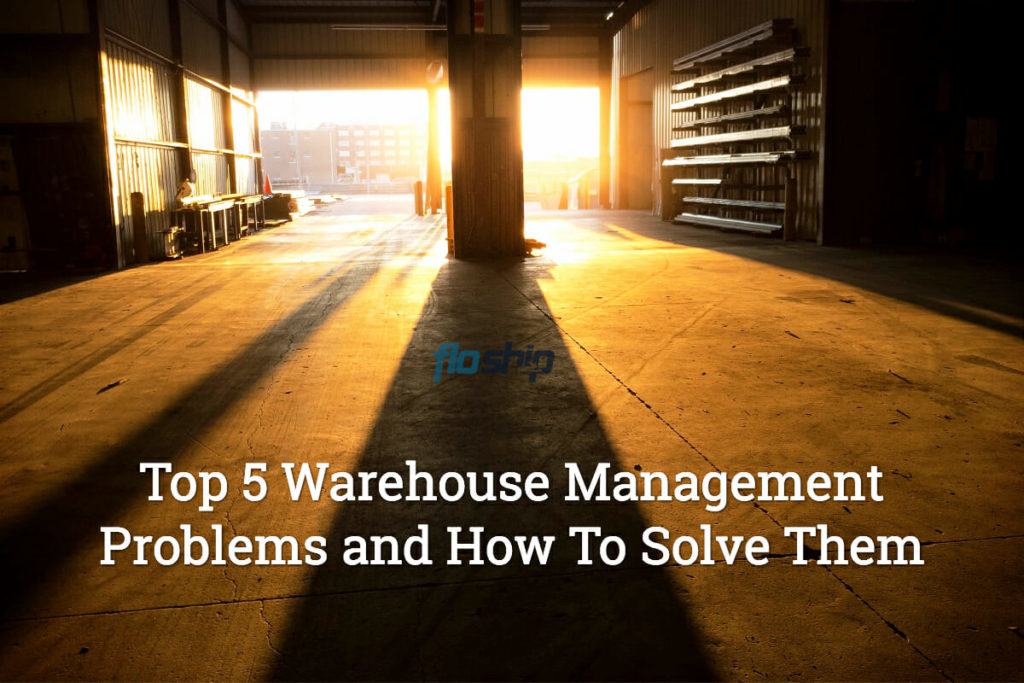Warehouse operations are the lifeline of all companies doing business in the United States and around the world.
Good warehouse management keeps products flowing efficiently through the system, which is a critical factor in serving customers and securing increasing profit margins. When warehouse operations are smooth, the entire company can relay on a reliable supply chain to prevent shortages and holdups.
However, a number of problems routinely affect warehouse operations. These problems can be corrected with appropriate warehouse management systems and rigorous worker training.
Here’s are the top 5 warehouse management problems and you can solve them:
1. Warehouse Inventory Accuracy
Keeping an accurate count of inventory items is one of the most challenging problems in managing warehouse systems.
In general, the most common issue in inaccurate inventory counts is human error. Initial counts, regular inventory counts or errors in everyday order picking can create significant discrepancies in the count in your inventory management system compared to on-hand inventory.
Many of these problems can be attributed to time factors, while other issues may lie in the realm of insufficient training on the inventory management system. When workers are confronted with a conflicting issue in the system, they are more likely to bypass it, in favor of facilitating delivery to the customer.
Over the period of 6 months to a year, these errors can accumulate, leaving puzzling gaps in the inventory count. This problem can be remedied with a number of strategies:
- Intensive training of every warehouse worker, regardless of level of activity on the floor, helps ensure the accuracy of the system.
- Encourage a strong working knowledge of how the system operates, so workers can assist each other with information, as needed, when problems develop throughout the day.
- Select a simple inventory management system that serves your particular needs and can help to establish a workable system that is easy for all workers to understand.
- Track down inventory discrepancies during a count, if there is time to do so. In many cases, mis-counts are only misplaced items.
- Shorten the time between counts to increase accuracy.

2. Efficient Warehouse Layout
Warehouse layout can either assist or cripple your warehouse operations.
The correct design should suit your own specific operation and the way the work flows through your system. Each industry can decide its own needs in regard to accessibility of product in the warehouse system.
The most popular items should be easily accessible to facilitate fast picking and shipment. These items should be stored at the front of the facility so that forklifts do not have to travel to far areas of the facility to reach the items.
Accessibility may need to be handled in terms of pallets, cartons, individual items or even batch numbers, depending on the type of industry.
The more complex categorizations of inventory generally require radio frequency or voice-directed systems that can provide data instantly and accurately to minimize errors and improve product delivery.
3. Inventory Location
Providing the right inventory location can be an important way to facilitate both inventory management and overall warehouse operations.
Inventory location problems generally develop over time, as new products are added to the inventory and space availability begins to impose more limits. However, failing to set up an efficient inventory location system can slow operations to a significant degree, leading to a variety of supply and delivery issues.
Re-organizing the layout and ensuring easy access to most popular items can help to keep goods flowing efficiently throughout the workday.
4. Picking Optimization
Picking is where the majority of warehouse management problems occur, but this issue is often a result of mistakes during receiving or put-away tasks.

Radio frequency and voice-directed systems are becoming widespread, but some small operations continue to rely on a paper-based system. Regardless of which type is used, the important part is to ensure full compliance with the system, even when circumstances arise that make compliance seem counterintuitive.
When exceptions occur in the system, such as offering an approved substitute item or finding a wrong item in a slot, these exceptions must be recorded to allow a full and accurate record of the inventory. A variety of different types of errors can occur in picking, such as noting an abundant amount of an item, but being unable to use it because it is already spoken for on back orders.
Picking is one of the areas of warehouse operations that can easily disrupt an inventory control system, because the tasks and decisions engaged in on a daily basis are often done in a hurry, in order to properly serve the customer.
Scrupulous attention to record keeping can help to keep the system accurate and reliable.
5. Quality Control/Shipping
In many cases, workers in charge of quality control also do the picking, packing and shipping of inventory items, so that errors never get found.
If possible, have a separate level of quality control to ensure better inventory management and supply chain issues. This separate level of authority can often provide the motivation to manage everyday inventory issues in a structured manner that encourages accountability.
A quality control function can record vendor accuracy, improve stock rotation and reduce the need for manual processing of warehouse items. Quality control systems ensure that the rest of the warehouse management program is functioning as intended.
Attention to these five areas of warehouse operations can ensure that your warehouse is functioning at optimum levels, to keep your customer base well served and to provide the most efficient conditions for your workers.

Ready To Upgrade Your Logistic Solution?
Speak to Floship ecommerce logistic consultant about improving your global support chain today




